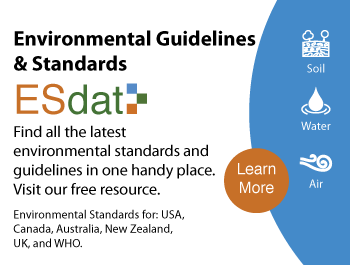The Government of Yukon’s Environmental Programs Branch regulates contaminated sites under the Contaminated Sites Regulation and the Environment Act. The Yukon Contaminated Sites Regulation provide regulations for identification, restoration and liability for contaminated sites. It states that a site is contaminated if the contaminant concentration equals or exceeds the defined numerical values; otherwise, it is deemed non-contaminated. It covers land uses, including industrial, agricultural, residential, and commercial, and water uses such as irrigation, aquatic, drinking, and livestock water use. The guidelines consider current and future uses defined by zonings, plans and policies, current and proposed site activities, and other appropriate factors.
The regulation defines the generic numeric standards for soil and water. Sampling procedures are outlined and approved by the Environmental Minister. These procedures ensure consistent and standardized approaches are used for sampling initiatives. Consequently, the Yukon Contaminated Sites Regulation provides risk assessment methods applied to contaminated sites. It considers human health risks, ecological receptors risks, and other special considerations relevant to specific cases.
Under the regulation, persons are permitted to make applications to the Minister for permits to conduct restoration activities. The application includes applicant details, contaminants, monitoring plan, and consent from owners or occupants of the concerned lands. The Minister then assesses whether a technical review is needed, and the applicant caters for the cost. The Minister then either accepts or denies the application.
The Yukon Contaminated Sites Regulation is therefore focused on protecting human health and the environment through the identification of contaminated sites and implementation of remediation initiatives. It is utilized by the Yukon government, developers, health professionals, landowners and occupants, among others.
On the ESdat website, Yukon Contaminated Sites Regulations can be found. All compiled environmental guidelines and standards are shown. These are pre-loaded into ESdat Online.
ESdat is a single repository for storing, analyzing and reporting your environmental investigation and monitoring data. ESdat validates and imports data from laboratories, data loggers, field apps and spreadsheets. Users can filter and view data using the built-in graphing, mapping, tabulation, statistical and report generation tools. Increasing efficiency and confidence in the data are often cited as key benefits by organizations using ESdat.
ESdat Online delivers a highly cost-effective and efficient approach to store your ongoing monitoring environmental data, optionally with a historical data upload provided as a getting started service. ESdat Online is perfect if you want a cloud-based system that collates and reports your ongoing laboratory and field results.
ESdat Server provides the advantages of ESdat Online with the option of adding ESdat Desktop for data experts to upload their historical data, effectively interrogate the raw data being used within the database, and automatically launch and send data to other Desktop Applications such as Surfer, ArcGIS and Excel.
A variety of complementary products are also available to help with related work, such as sample planning and electronic Chain of Custody (LSPECS), offline field data collection or bore logging (pLog), production of bore logs (ESlog), public portals and customized reporting.

Reference
CanLII (2021). YOIC 2002/171. Retrieved from https://www.canlii.org/en/yk/laws/regu/yoic-2002-171/latest/yoic-2002-171.html






